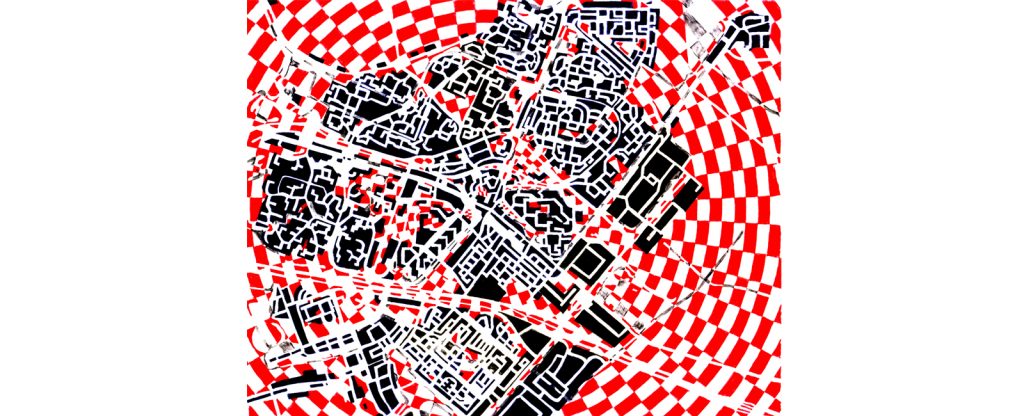
by Nadine Roos
Birthday present
As a birthday present, I got a book that made me laugh, the ‘architectuurgids Zoetermeer’ ( Architecture guide Zoetermeer). Why did a dull city like Zoetermeer have an architectural guide? I got the book from an old friend. We both grew up in this Dutch New Town and don’t remember this city as very exciting.
Recognition
But still, browsing through this book was a feast of recognition. My mother’s house was pictured in it, as well as the parking-deck-houses, where I lived till I was nine. I started to look into this book with more interest. Quickly I stopped laughing.
The book is intriguing. It is filled with architectural experiments. The city has been build with a contagious optimism and the ambition to build the best living environment. All the latest ideas and research were used by a whole interdisciplinary team of architects, urban designers, artists and civil servants. They even had an experience expert onboard.
Overflowing city
Zoetermeer was an answer to The Hague. In the 50’s of the previous century, The Hague was a crowded city and didn’t have enough room to expand. Inspired by the garden movement the urban planners wanted to free the working-class from the polluted industrial city and to offer them a pleasant, open, and green living environment. In 1962 it was decided that Zoetermeer would become the nucleus in which The Hague could overflow. Zoetermeer transformed from a village with roughly 8000 inhabitants into a New-town with 125.000 inhabitants today.
Confusing
While reading about the intensity of which Zoetermeer had been built I became more and more puzzled. A lot of the elements I strive for today were implemented in Zoetermeer. For example, I aim for greener cities. Zoetermeer is very green. I aim for more child-friendly streets, where the cars are less dominant and where kids have more room to play. Zoetermeer has child-friendly neighbourhoods called ‘woonerven’.
How then is it possible that a lot of people talk condescendingly about Zoetermeer. Why do I find this city oppressive?
Oppressive principles
The city has been built according to the principles of a city model. In the book ‘welcome to the urban revolution’ the author Jeb Brugmann describes this model. It means that neighbourhoods were planned and executed at once. They didn’t grow organically and thus don’t have a stratification. This means their flexibility is minimal. It doesn’t matter that the architecture and urban design is experimental. The city is rigid.
So, for future New-towns, we should lose the inflexibility while we keep the same optimism and urge to experiment. And for existing New-towns let’s introduce a stratification and flexibility. This way they can become real cities, ones you can fall in love with.

Leave A Comment